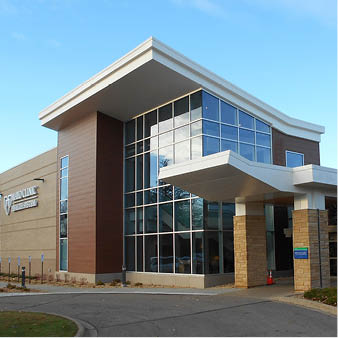
Recent Blogs
Orthopedics & Orthopedic Surgery (Bones)
Whether you have a sports injury or are seeking care for conditions like knee pain, tennis elbow or shoulder pain, our orthopedic surgeons and specialists can help. They provide diagnosis and surgical and nonsurgical treatment options in Iowa, Minnesota or Wisconsin.
Are you a new patient with hip, knee, hand or wrist concerns?
We make it easy for you to request an appointment.
Existing patients should schedule through the patient portal.
Find out more about our orthopedic services:
- Conditions and consultations
- Diagnosis and treatments
- Orthopedic specialists
- Referrals
- FAQ
- Orthopedic locations near you
- Orthopedic specialists near you
Conditions and consultations
Our surgeons and specialists provide consultations and a personalized treatment plan.
Conditions we treat include:
- Ankle pain and injury, including ankle fracture, sprained ankle and swollen ankle
- Elbow pain and injury, including bursitis, golfer's elbow and tennis elbow
- Foot pain and injury
- Fracture and orthopedic trauma, including avulsion fracture, bone fracture, comminuted fracture and stress fracture
- Hand pain and injury
- Hip pain and injury
- Knee pain, injury and swelling
- Shoulder pain and injury
- Sports-related injury
- Torn ligaments
Diagnosis and treatments
Orthopedic surgeons provide diagnosis and surgical and nonsurgical treatment options that can help you enjoy an active, pain-free life. We've redesigned the orthopedic care experience, including a leading joint replacement program that allows you to recover more quickly and leave the hospital as soon as possible.
Treatments we provide include:
- Ankle surgery
- Hip replacement surgery
- Joint replacement surgery
- Knee injections and other treatments for knee pain
- Knee replacement surgery
- Orthopedic trauma treatment and surgery
- Orthopedic urgent care
- Reconstructive orthopedics
- Rehabilitation
- Reverse shoulder replacement surgery
- Shoulder impingement surgery
- Shoulder replacement surgery
Orthopedic specialists
Our highly skilled team of orthopedic physicians, advanced practice providers, therapists and athletic trainers are available at a location near you. They combine to deliver a seamless experience — from diagnosis to treatment and rehabilitation — so you can get back to doing what you love.
Our specialists include:
- Athletic trainers
- Foot doctors (podiatrists)
- Hand surgeons
- Hip surgeons
- Orthopedic doctors
- Orthopedic surgeons
- Pediatric orthopedic surgeons
- Rehabilitation therapists
- Shoulder pain doctors
- Sports medicine specialists
- Trauma surgeons
Find orthopedic specialists near you.
Additional care and therapies may be provided by:
Referrals
You can make an appointment without a referral from your provider — simply call the appointment number of your preferred location.
If you're a provider, you can refer patients to Orthopedics online, by phone or fax. We value the opportunity to collaborate with you on a treatment plan.
FAQ
What should I expect during my first appointment, and what should I bring?
Your first appointment will include a full history evaluation. Imaging may be needed to support the diagnosis or determine next steps in your treatment plan. Depending on your needs, our nursing team may review presurgical recommendations or teach you how to care for a cast, brace or splint.
Appointment times vary depending on your symptoms or condition. Most initial appointments take at least 30 minutes.
Bring any imaging or medical records from non-Mayo Clinic Health System facilities. Visit our Medical Record Forms page to grant permission for others to access your protected health information or request a change to your health record.
What are my payment options and do you offer financial assistance?
Visit the billing page of your preferred location for information on insurance, billing and payments.
We serve patients in difficult financial circumstances and offer financial assistance to those who have an established need to receive medically necessary services. Learn more about financial assistance options.
Can you provide a second opinion?
Yes — simply call your preferred location to schedule an appointment. See What should I bring to my first appointment for tips on how to prepare.
What follow-up care do you provide after treatment?
We offer customized rehabilitation to match your needs. Our goal is to help you remain as active as possible at any age. We'll work with you to help you understand your condition and provide you with the tools and resources to manage it. We partner with our expert colleagues in Physical Therapy and Occupational Therapy to initiate these plans.
Do you have an after-hours number in case of emergency?
Always call 911 in case of an emergency. For after-hours help with other issues, get virtual care 24/7 through the Primary Care On Demand app or review our convenient care options.






